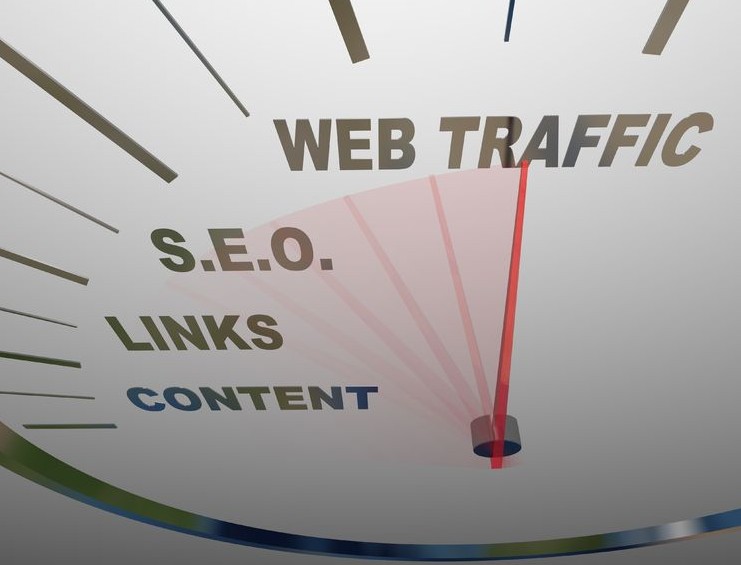The internet is expanding and is still in its infancy, and it is by far the most efficient way to generate visitors to a website. However, building a site is one thing and getting it found is another.
Do you think having a solid traffic plan is important?
A solid plan is required to attract the right visitors and draw them from as many sources as you can.
What if the traffic source eventually dried up? If you had several traffic sources running at the same time, you’d hardly feel the drop, and you would still have the other sources producing long enough for you to correct the strategy to get a replacement traffic source.
Your Diverse Traffic Strategy
There are several ways to approach this and I advise using them all. There is search engine marketing, pay per click ads (PPC), remarketing, social media, and e-mail blasts. There are various other tactics, but these are the main.
For example using Search (SEO and PPC) one can rank their primary website, a Yelp listing (or other branded 3rd party page), Google local listing for local businesses, videos, even press. Ad PPC into the mix that and you have a potential for six listings on the 1st page. Now, that’s online real estate, and we haven’t even tapped social yet.

Here are 7 advantages to having a diverse traffic strategy:
1. A wider reach for improved brand awareness.
Millions of people go online every single day, and your customers and their family and friends are found in many places.
Utilizing every platform, you can attack your market from multiple angles. You can drive traffic from Social Media, then tag them with your remarketing pixel, so your ads are following them all over the web. Now you’ve just doubled-down on your Social Traffic. Consumers will become much more aware of your products and services.
2. Minimize risks and maintain the flow of website traffic.
Internet trends and technologies are now getting developed at lightning speed. Businesses have to keep an ear on the ground to know about the latest developments. The brand needs to be where the people are hanging out and looking. That’s where the opportunities are to grab more attention.
As one trend emerges, it has a growth curve before it starts to decline. Get ahead of the curve by using new platforms and learning how they work. A multi-channel approach allows you to grab more attention, and you need the attention of your customers. Even if one of the channels fades in popularity, there will be other sources of steady traffic for the site.
3. Get a competitive advantage.
Most businesses stick to the basics. They use one strategy over and over to get more traffic. Once they see results from a campaign, they assume that it’s all they ever need. Anyone who thinks outside the box and looks for other channels gets an instant advantage over most of the competition. SEO, PPC, email, social media, and others can all make valuable contributions.
Those who move fast can establish a following right away and corner the market while competitors take their time. They will be seen as a leader in their niche.
4. Cater to different groups.
Each platform tends to attract a different set of users. Campaigns may then be crafted to appeal to a particular segment of mobile users or residents in a particular geographical area.
Perhaps one product page gets more hits from web searches while another draws more views from social media sites. This may be due to the difference in demographics. Individual social networks attract a younger crowd making them suited for products that cater to this age range.
5. Develop a loyal customer base.
In the past, people viewed companies as abstract concepts. They were nothing more than sources of goods. Most interactions were limited to sales and repairs. Now business has gotten a lot more personal. Social media has made two-way communications accessible to all.
Customers expect businesses to have their pages for updates, promos, and concerns. Those who can respond quickly and efficiently earn lots of loyal fans. Some customers become brand evangelists. Continue to serve your clients far into the future to create returning sales and traffic.
6. Maximize the characteristics of each platform.
Every platform has its strengths and weaknesses. Cater your message to the different platforms with campaigns that are tailored to suit each one. For example, Twitter works best for time-sensitive short messages. Product launches, contests, and other promos can be announced through this account. Longer texts can be reserved for lead generation through email and Facebook.
Instagram, on the other hand, puts images front and center. This works best for businesses that have creative products with striking visual features. Food, clothing, footwear, toys, electronics and beauty products are some examples. Services related to grooming, design, art, fitness, and health also fit perfectly. Instructional clips may even be posted with links to the full video on the site.
7. Omnipresence reinforces the message.
Many users maintain accounts on multiple platforms. They are likely to see ads multiple times as they go through the day. This is a good thing as ubiquity reinforces the message. They are more apt to click a link once their interest has been piqued by its omnipresence.
What does your traffic strategy include? Share it in the comments below.
Find a Home-Based Business to Start-Up >>> Hundreds of Business Listings.


















































